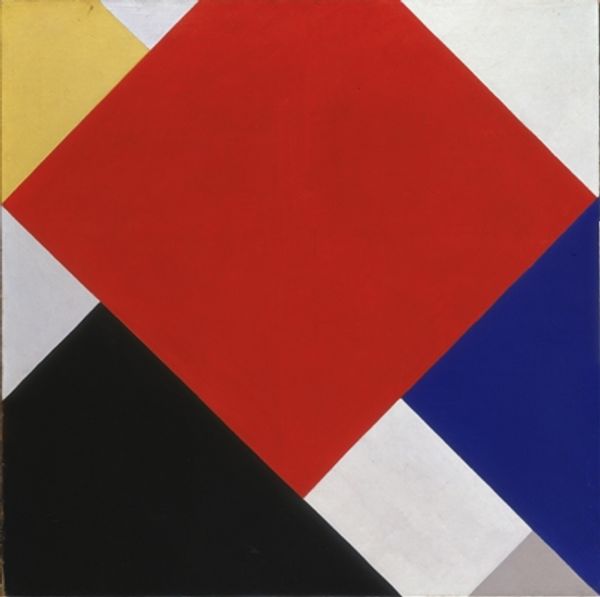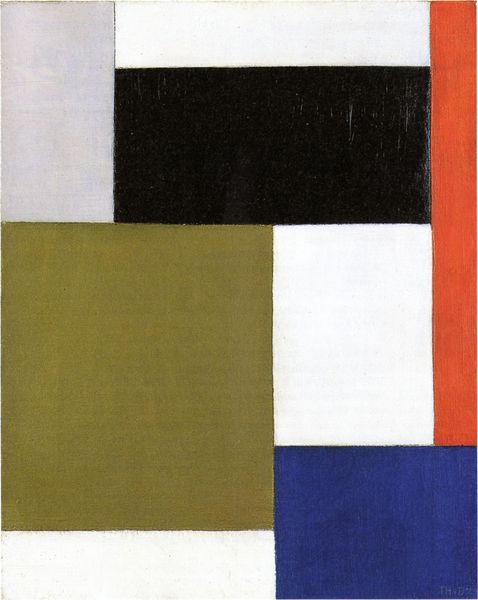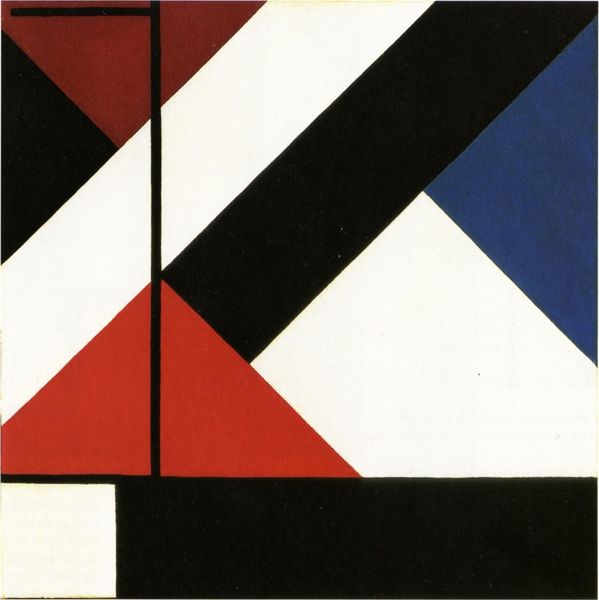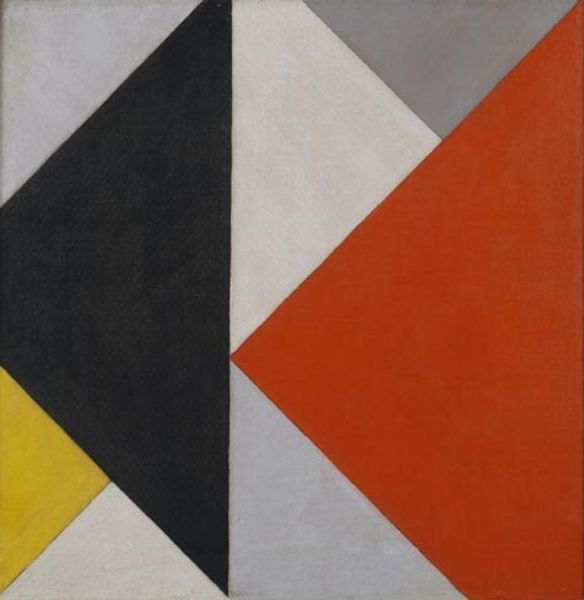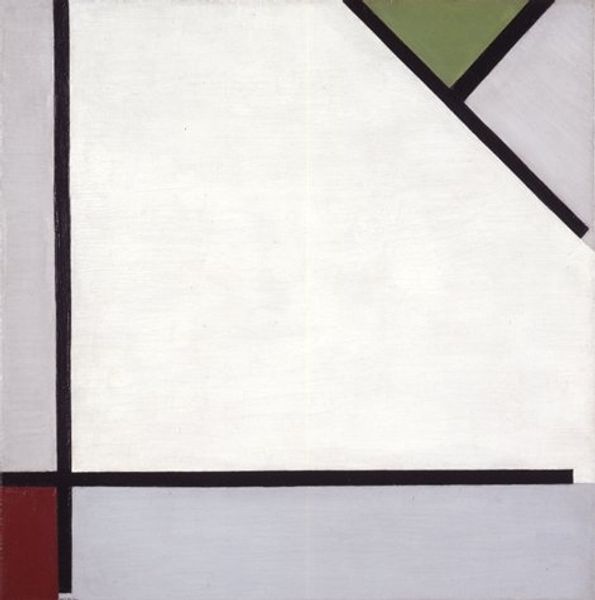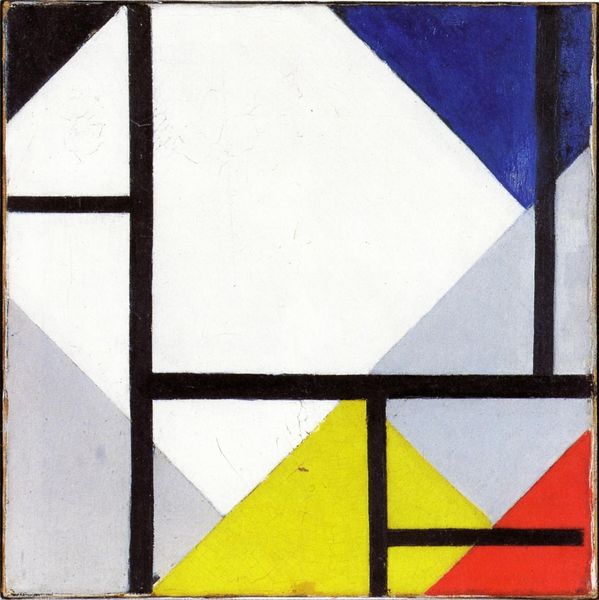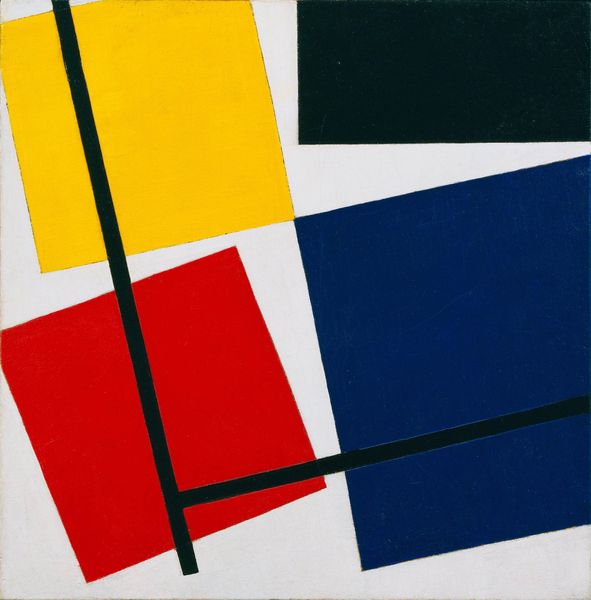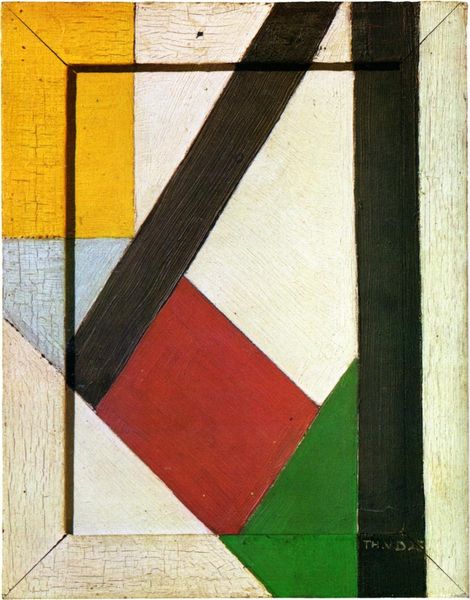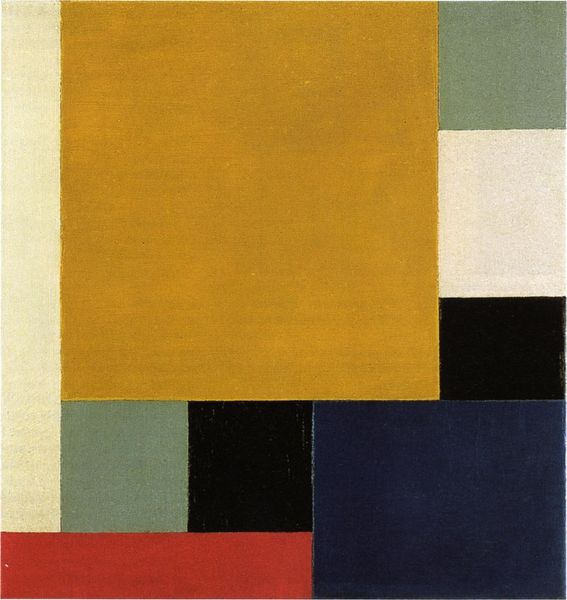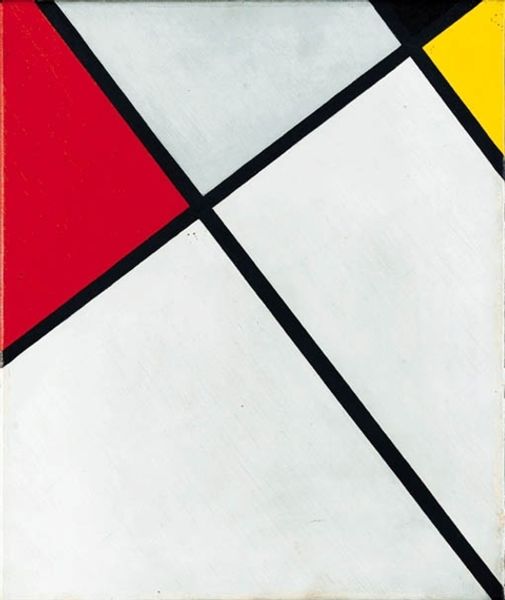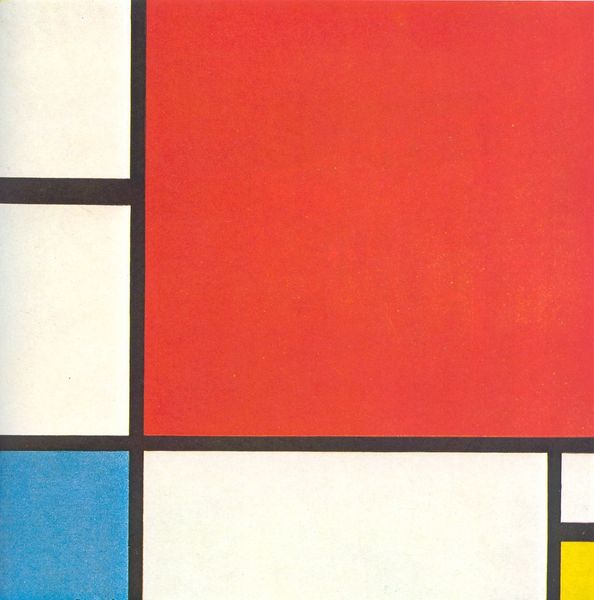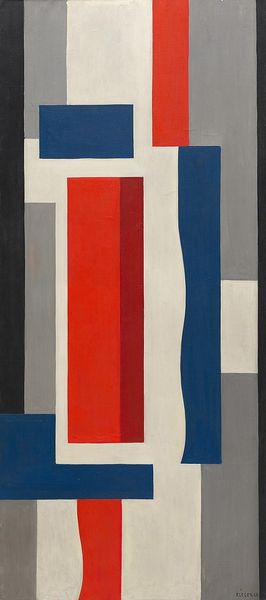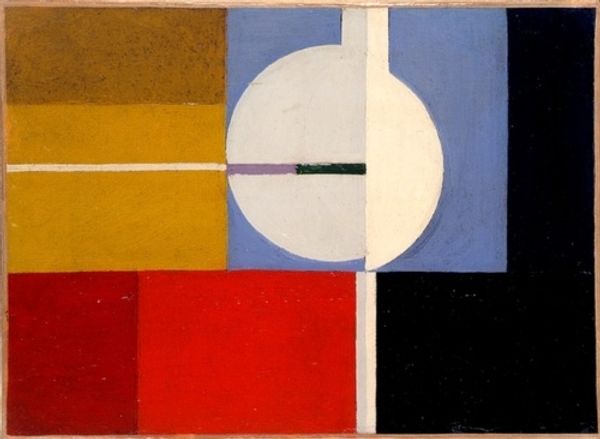
painting, oil-paint
#
de-stijl
#
abstract painting
#
painting
#
oil-paint
#
geometric composition
#
constructivism
#
form
#
geometric-abstraction
#
abstraction
#
line
Dimensions: 50 x 50 cm
Copyright: Public domain
Theo van Doesburg painted Counter-composition XIV with oil on canvas. Van Doesburg and other artists within the De Stijl movement deliberately restricted their palette to primary colors and a limited range of geometric forms. In this work, the planes of color are separated by bold, black lines. Look closely and you will notice that the paint application is very controlled and precise. The smooth, even surfaces are achieved through careful layering and blending, evidence of the artist's command of traditional techniques and processes. However, the reduction to elemental forms was not just an aesthetic choice. De Stijl aimed to create a universal visual language, one stripped of individual expression in favor of pure, rational design. The work’s very title, ‘Counter-composition,’ suggests that this approach can counter existing artistic composition. This emphasis on simplification and standardization connects to wider industrial manufacturing processes and, in turn, the social and political goals of modernism. Ultimately, it's in the work's material execution that the tension between art and industry becomes clear. While embracing the ideals of mass production, Van Doesburg's handwork reminds us of the skill and labor involved in even the most seemingly simple creations, and urges us to see the value of art within a changing society.
Comments
No comments
Be the first to comment and join the conversation on the ultimate creative platform.
